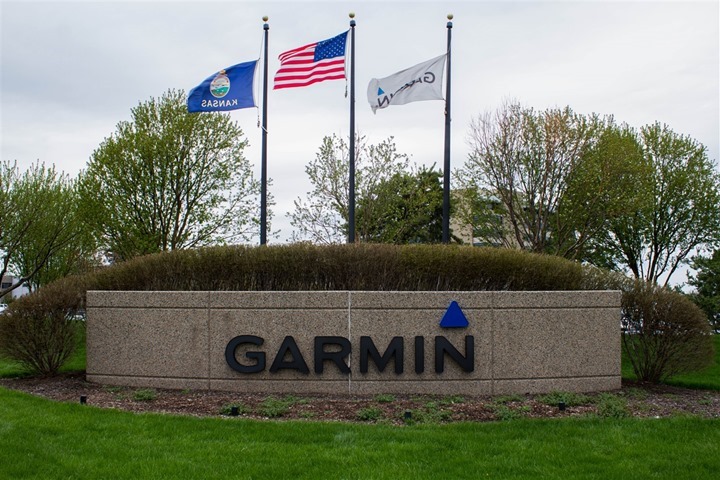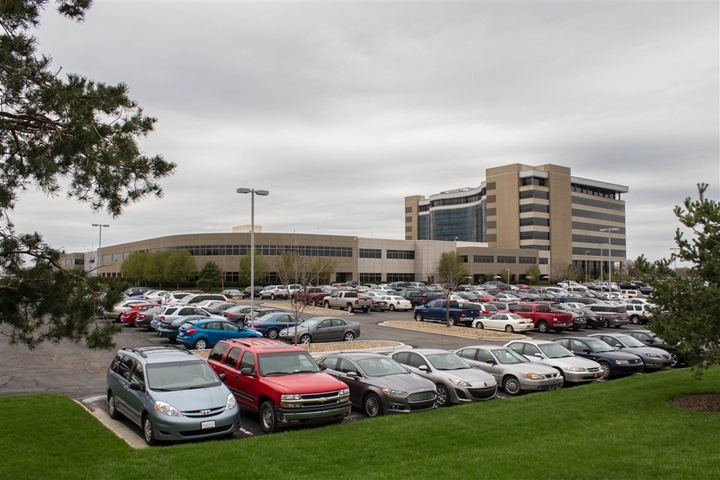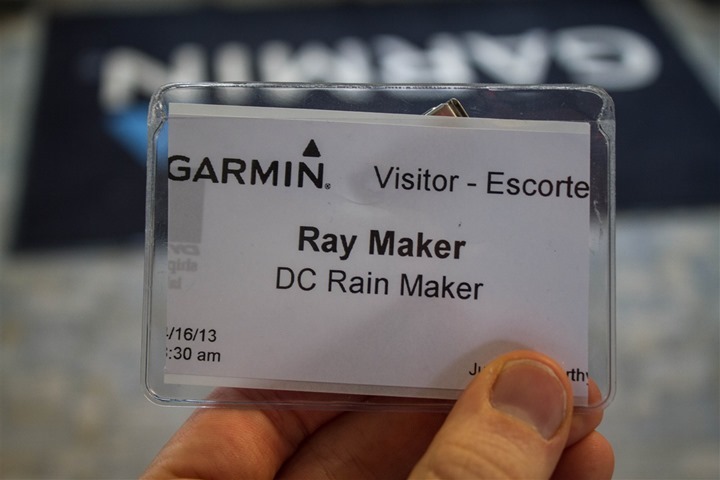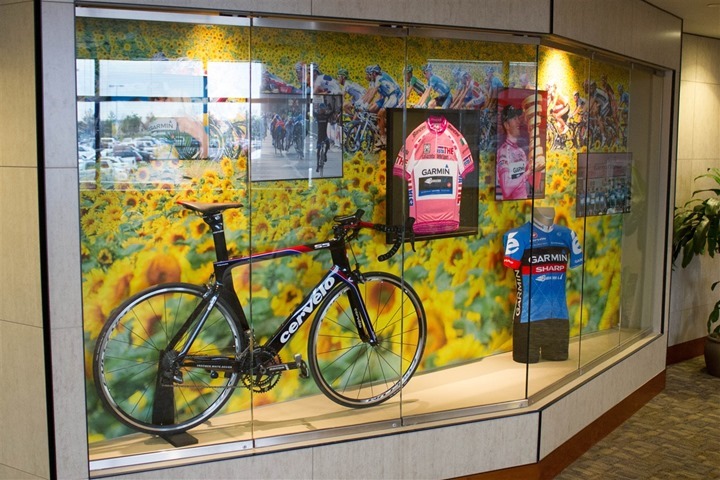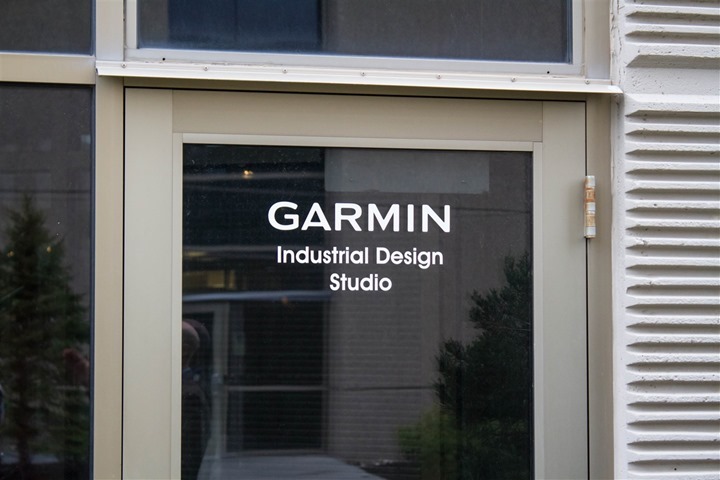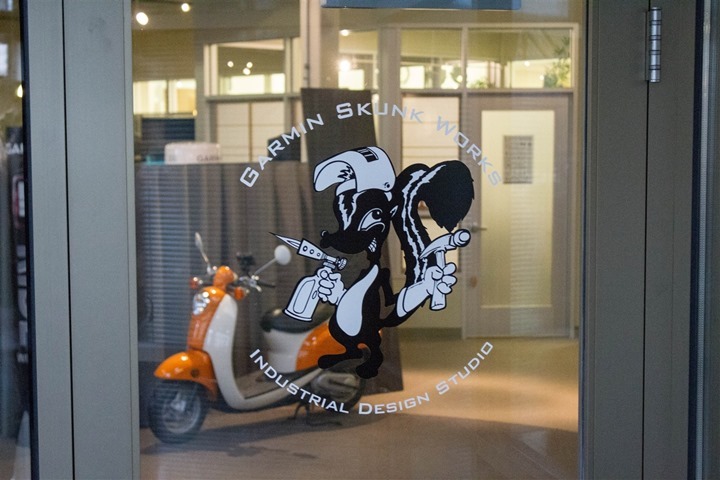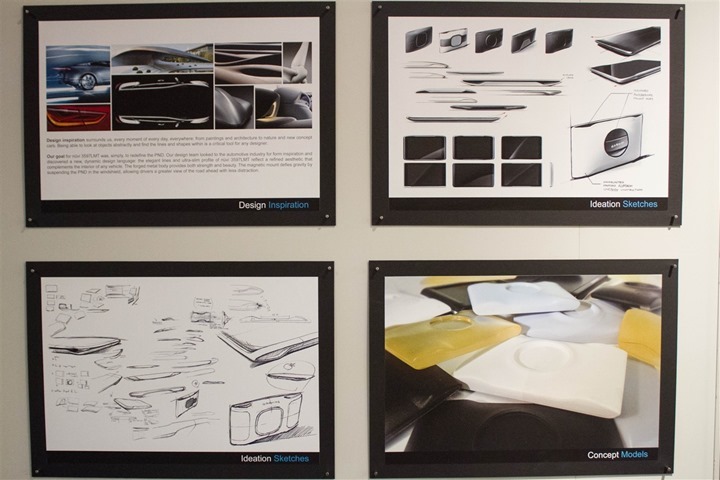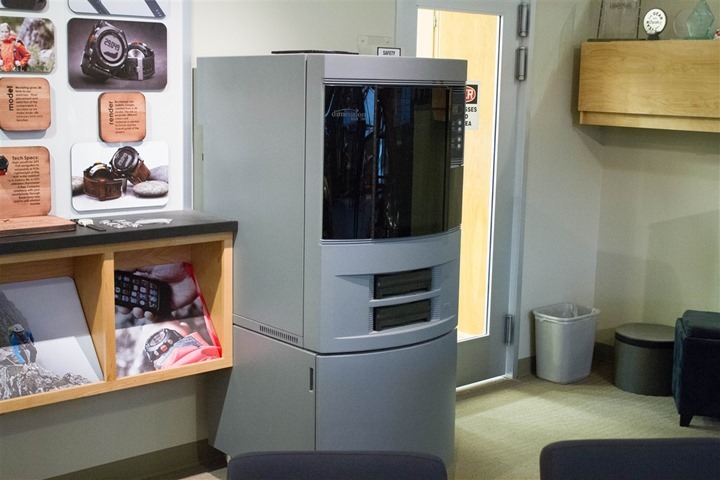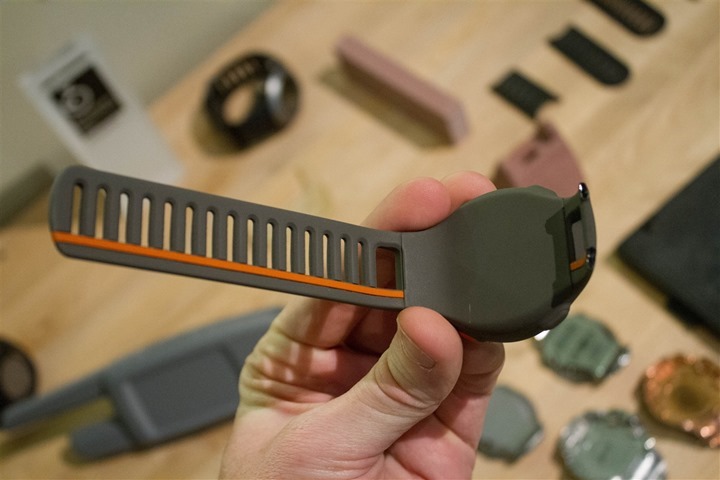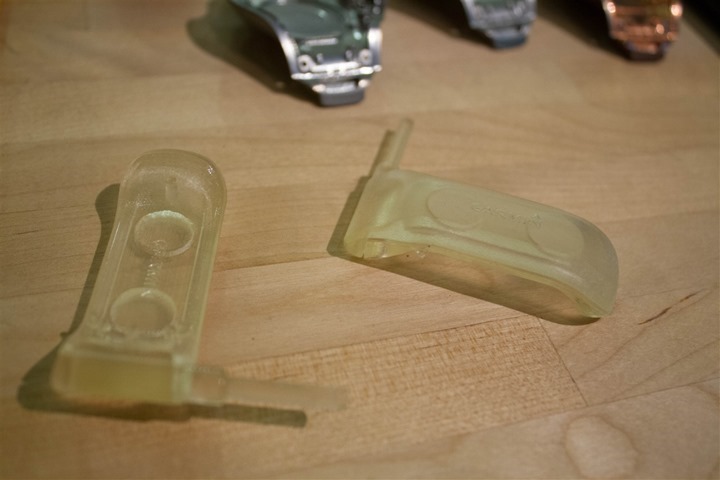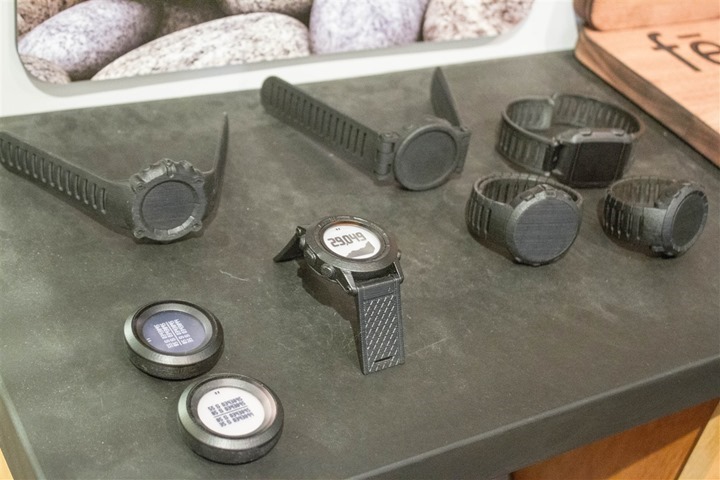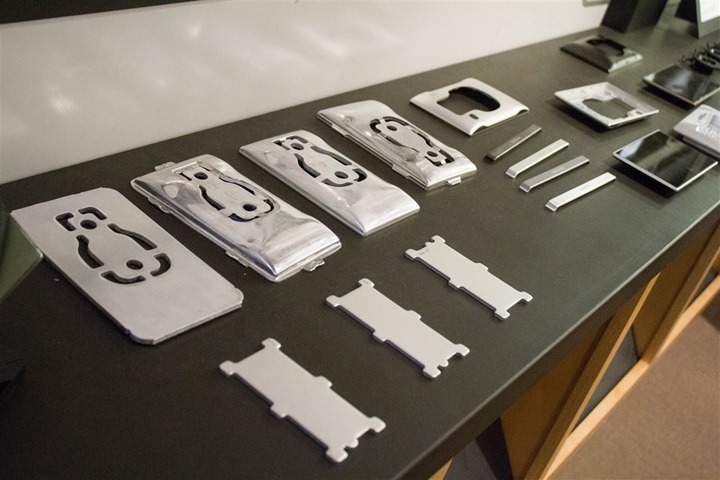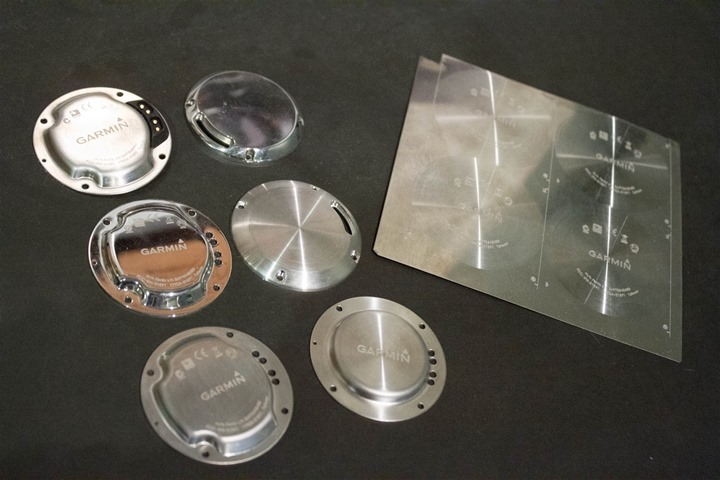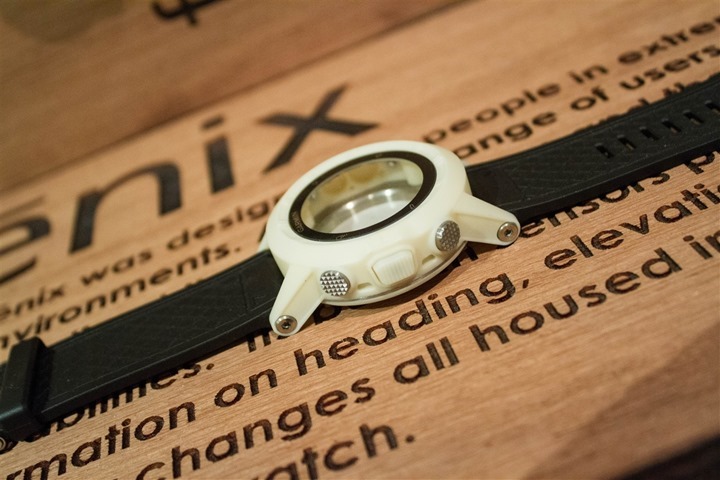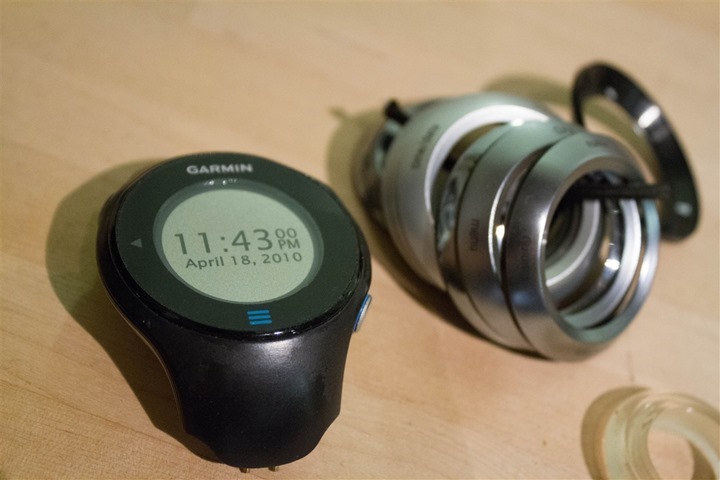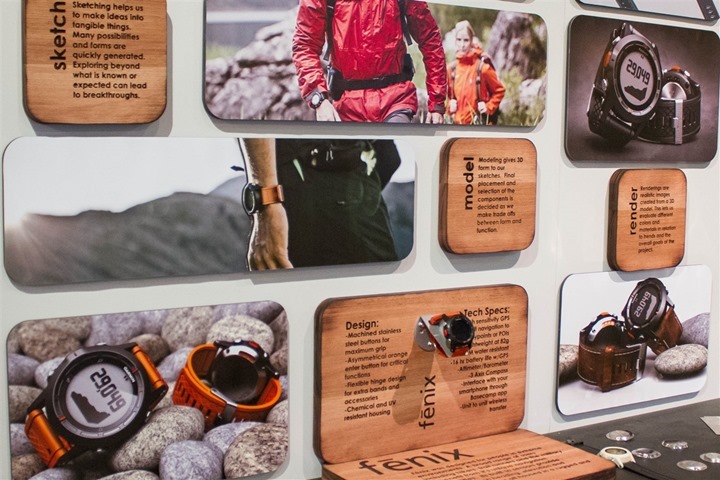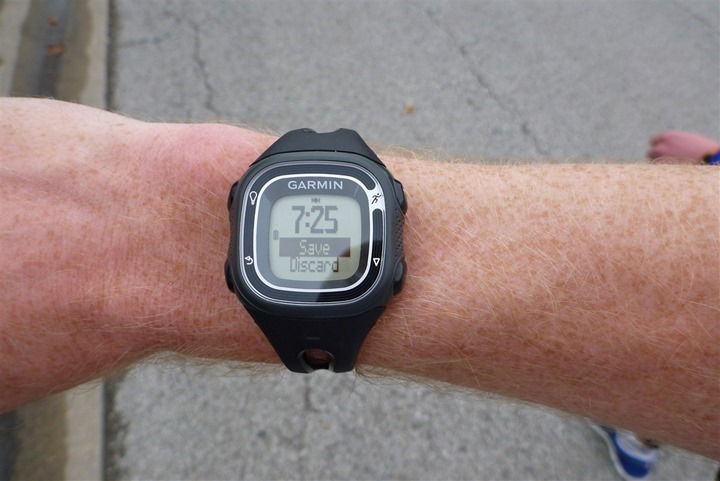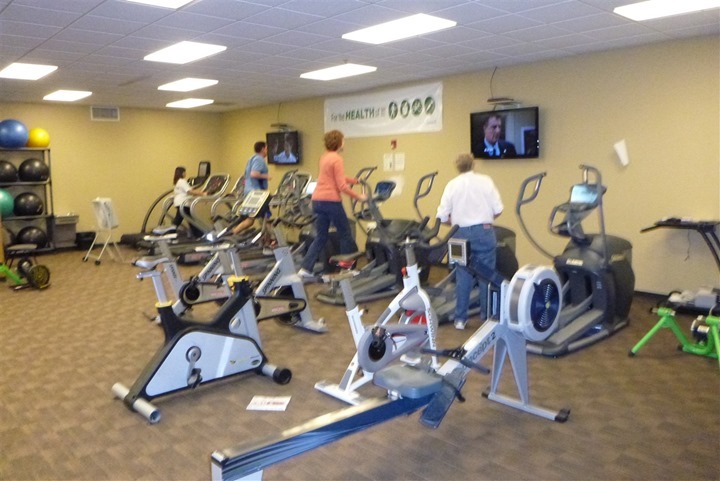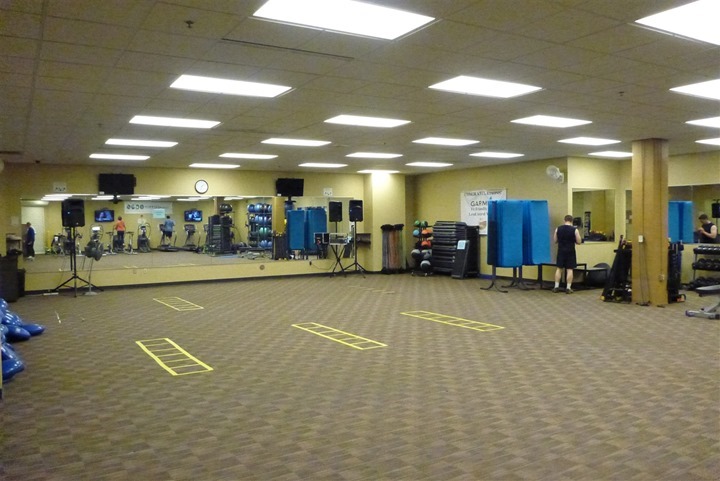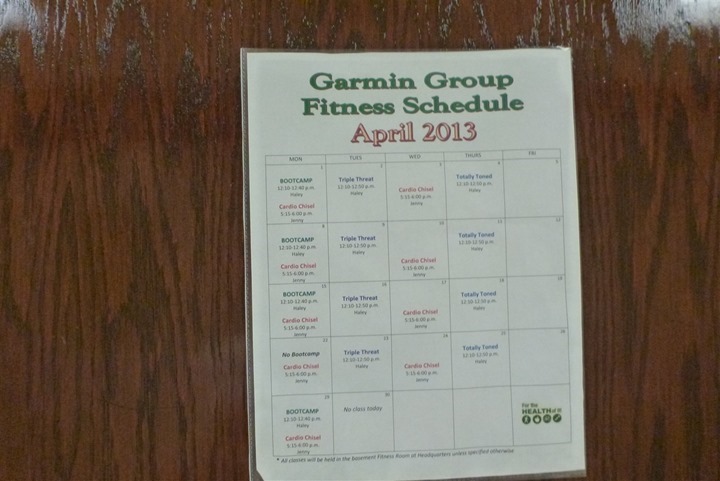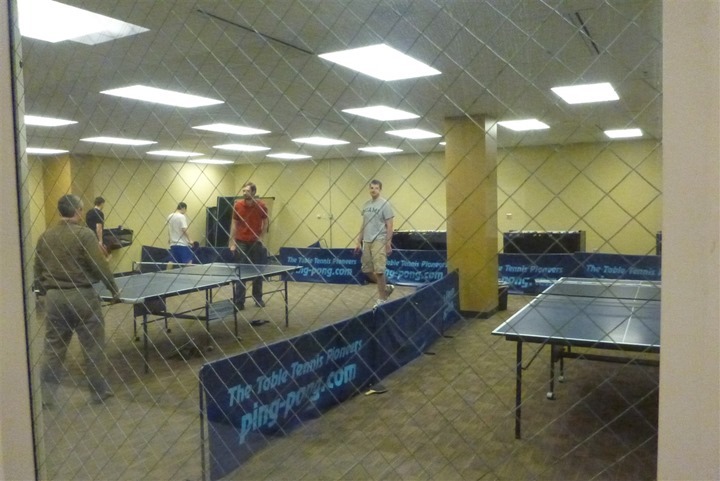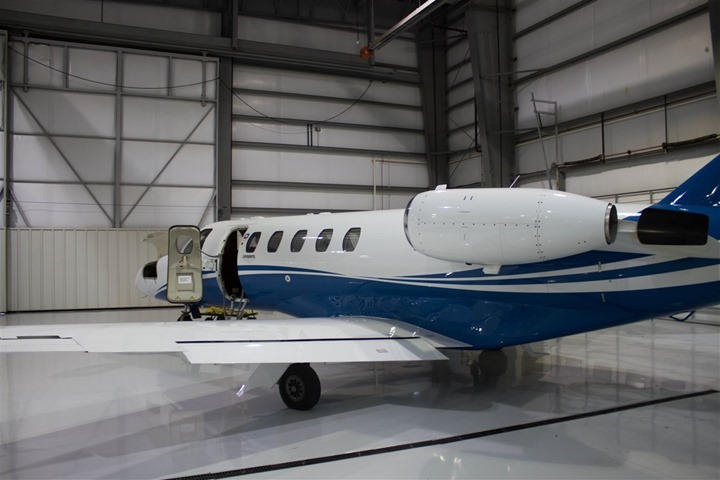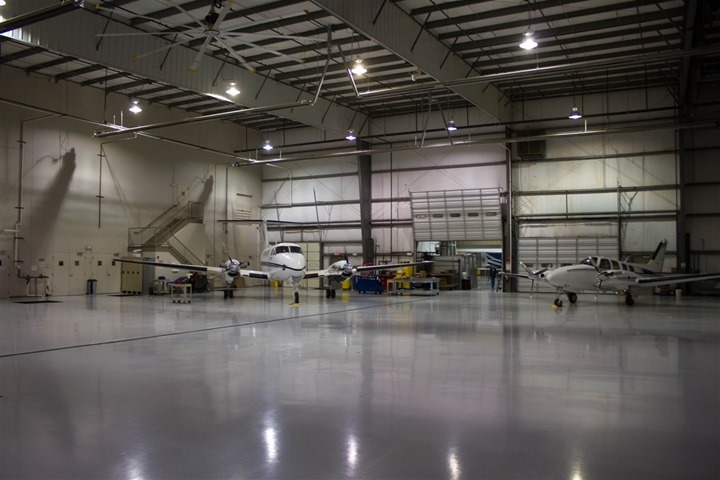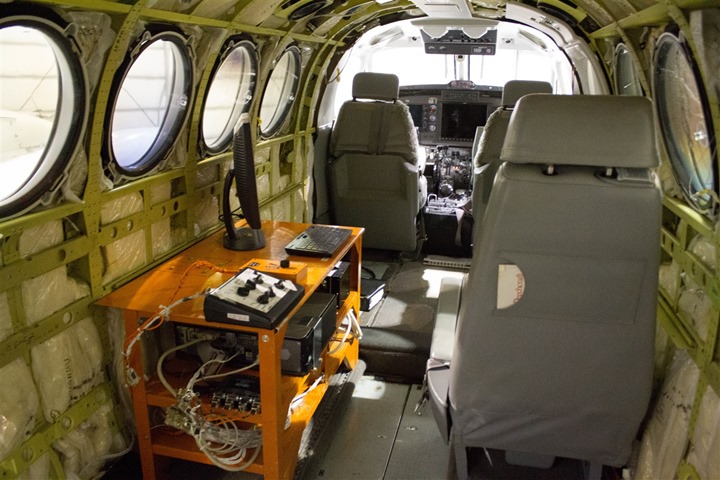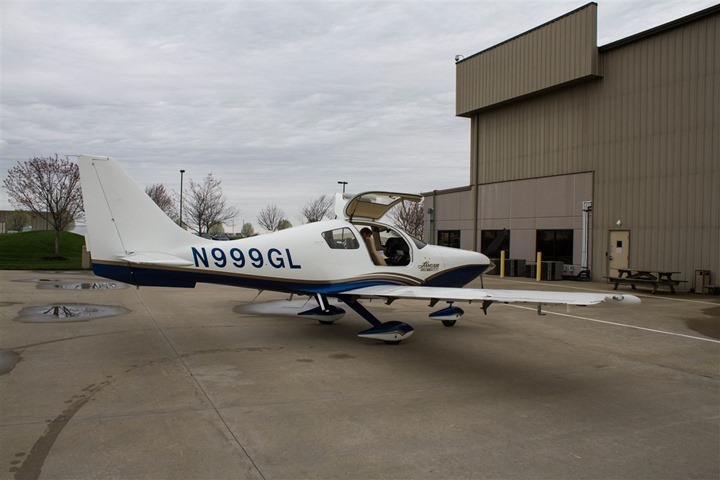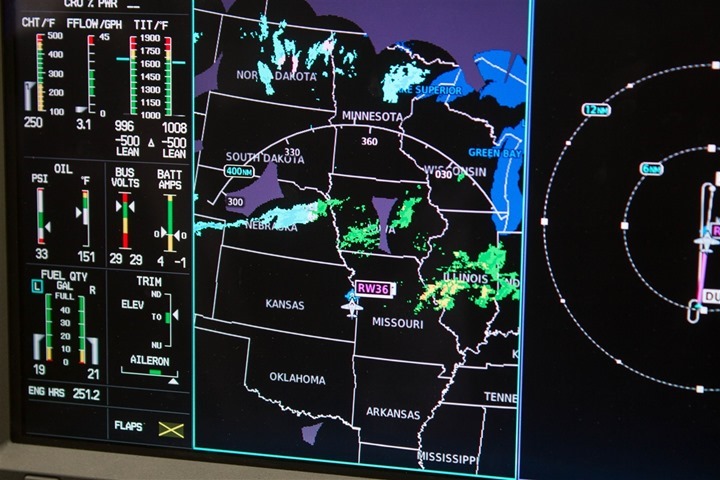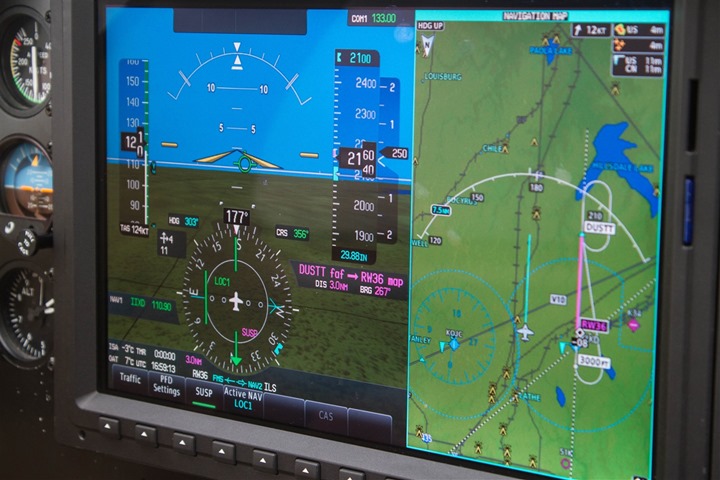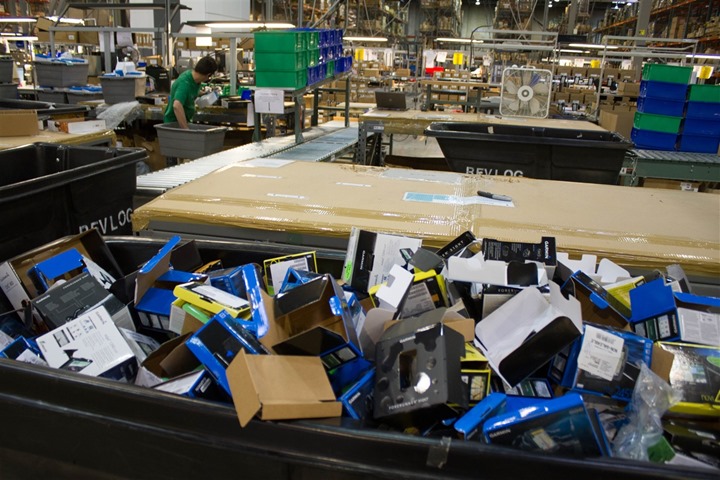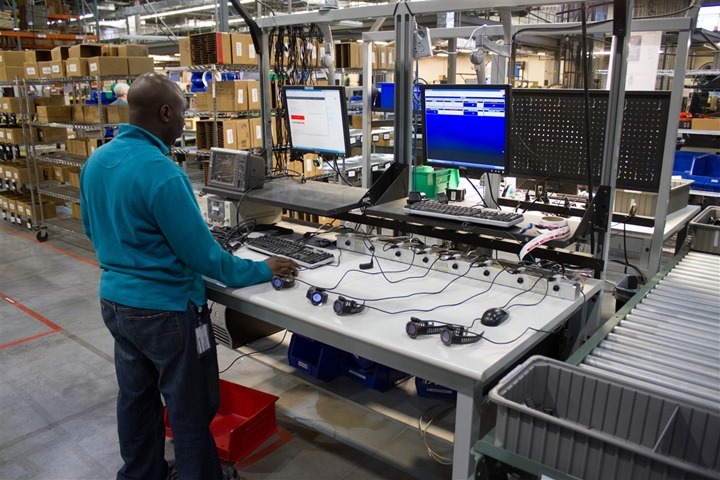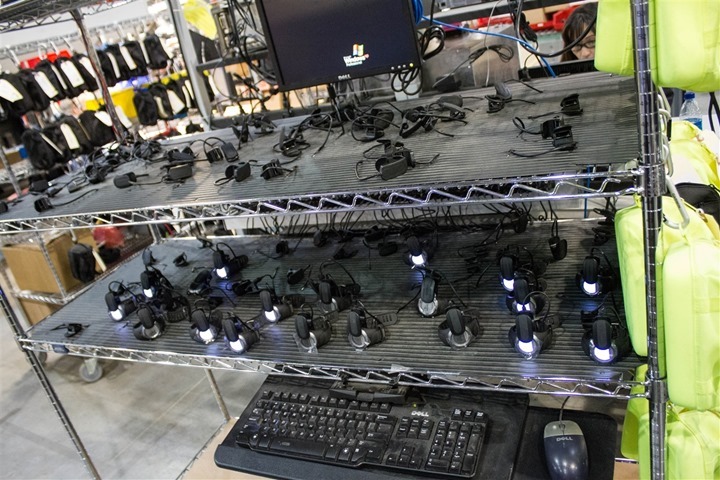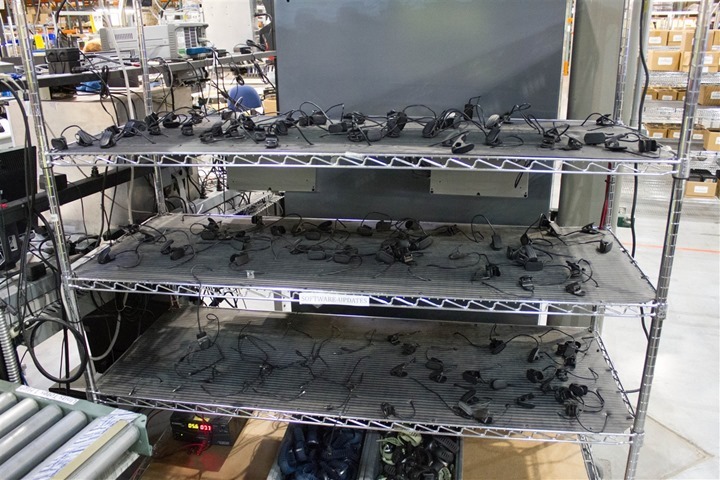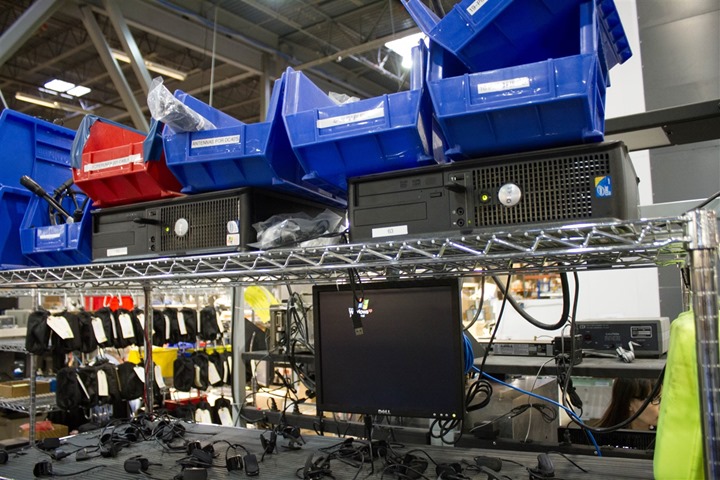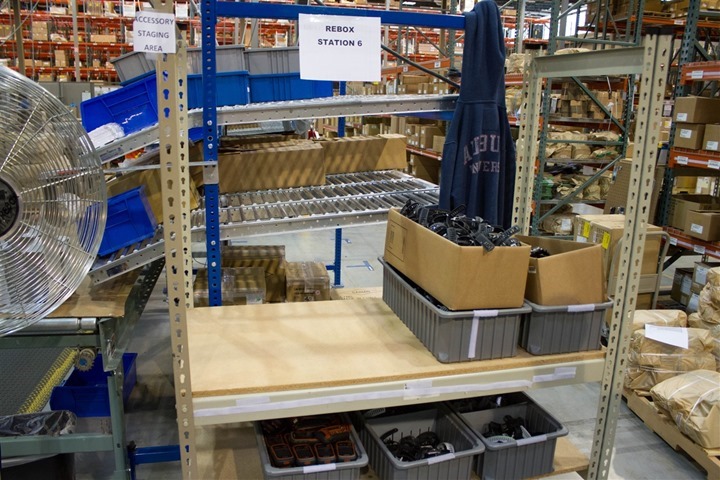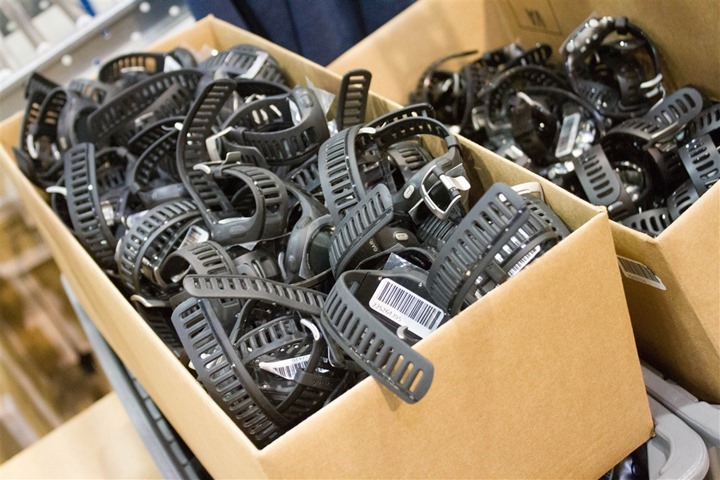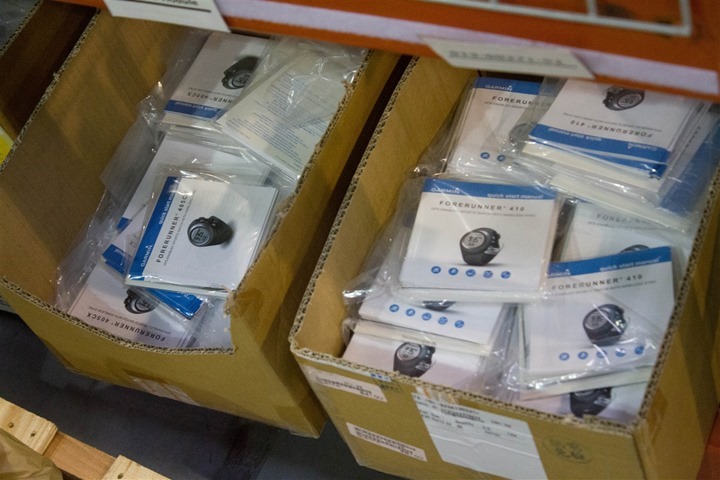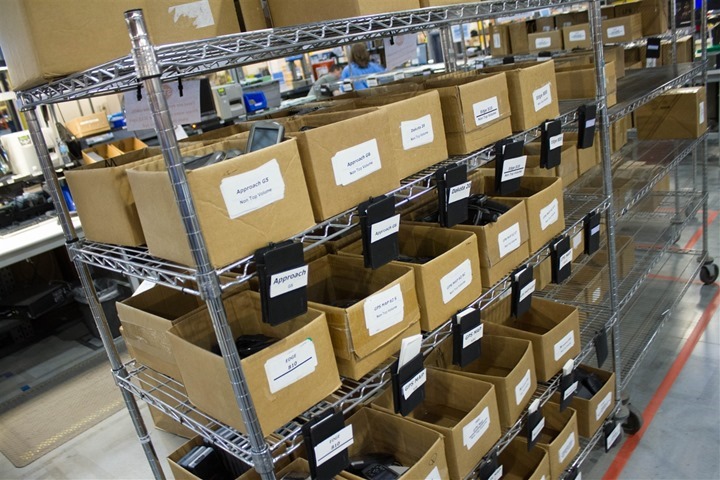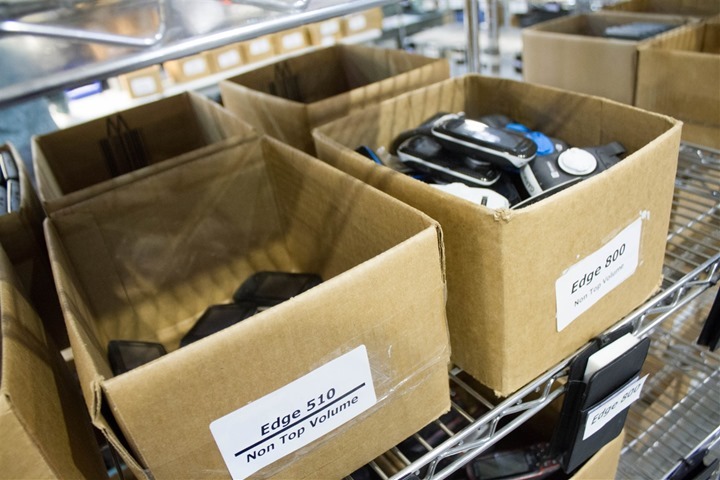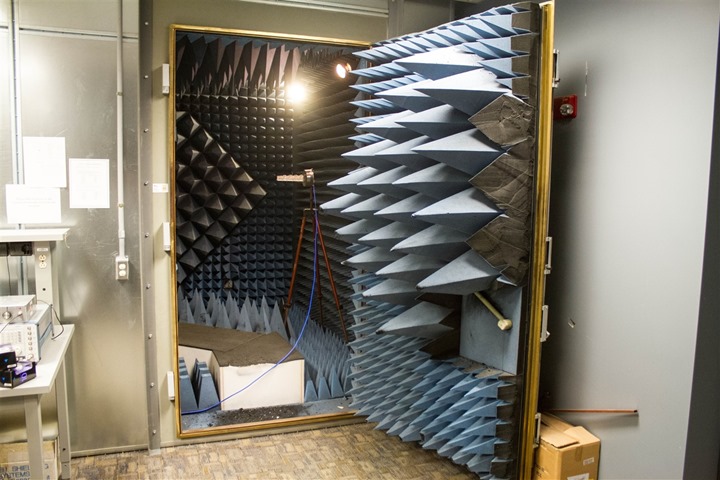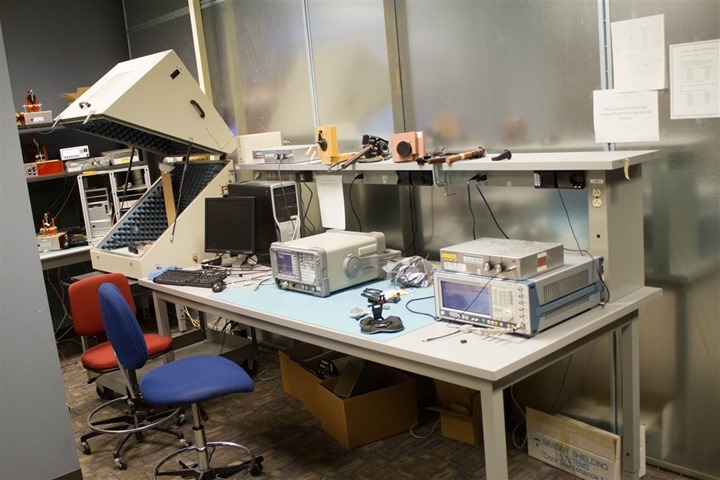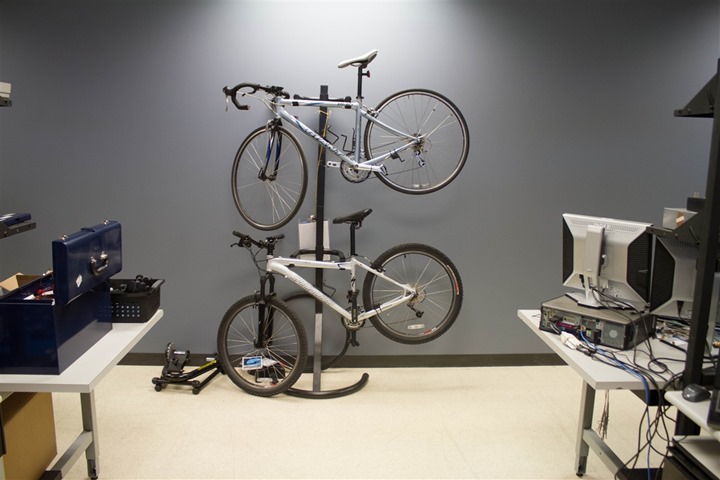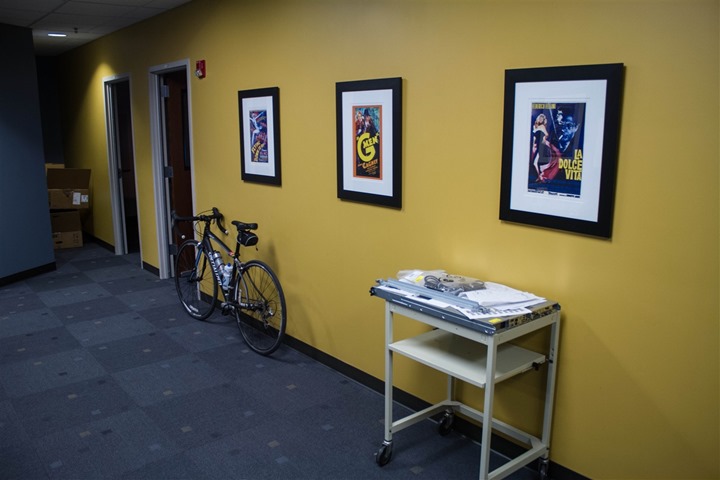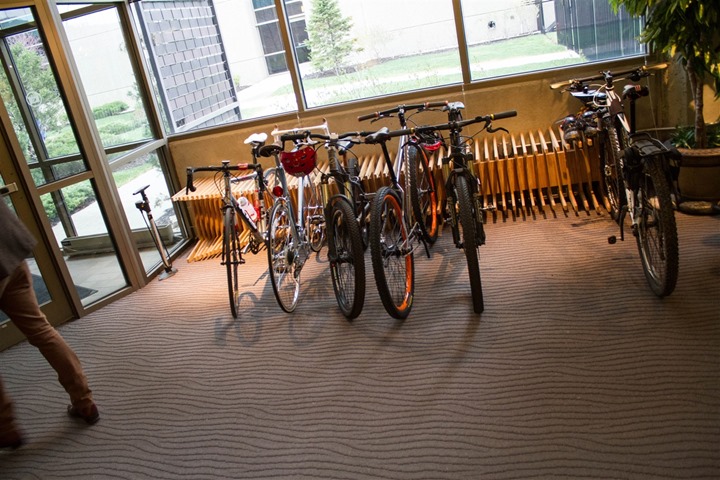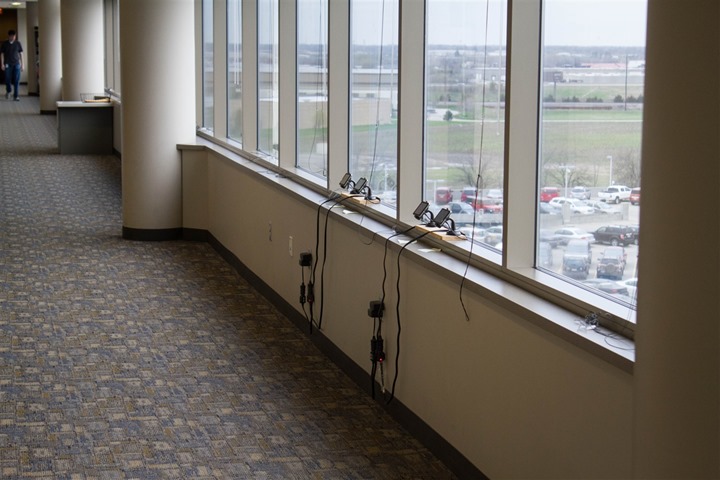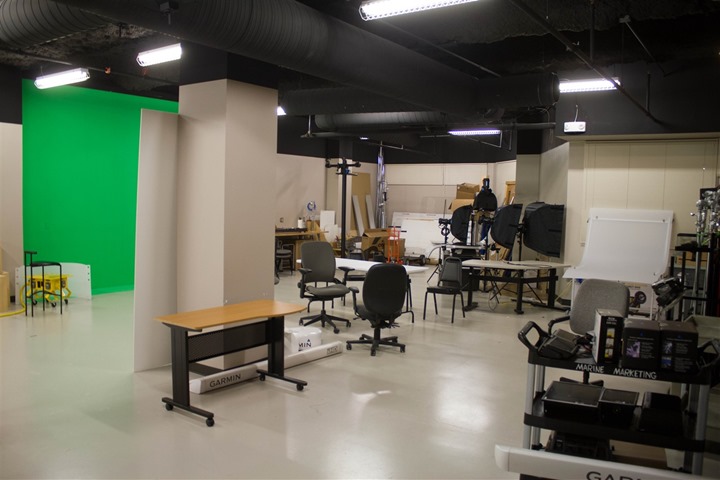Before I dive into the main focus of today’s post I just wanted to briefly note how saddened both The Girl and I are over the attacks in Boston on Monday. I didn’t hear about it until some hours later, and was stunned and disgusted. At this point we’ve been relieved to hear that those friends and family we knew personally who were running or cheering have all been accounted for as ok (thank you for all who asked us). We continue to hope that the same can be said for any readers who may have been there running or cheering. And finally for those who have been personally impacted, you’re in our thoughts and prayers. –Bobbie & Ray
–
I had talked with the Garmin folks back in early January about the potential for adding a short Kansas addendum to one of my various US trips. The goal of which would be to be able to spend some face to face time with the various Garmin product teams, all of which are based in Olathe, Kansas at Garmin’s headquarters. While I have regular calls with not only folks from Garmin, but virtually every manufacturer in the sports technology space – being able to understand and see some of the behind the scenes aspects would be useful. It would allow me to funnel your feedback to the exact people in charge, and eliminate some of the telephone games that occur within large organizations. It can sometimes be difficult to accurately express ‘suggestions’ to other companies via conference calls – especially with so many teams involved.
As I noted on Monday, I do and did cover all of my own travel expenses related to this side trip. Same goes for another major sports technology company that I’m meeting with later this week. As always, your support of the site helps make these sort of posts possible.
I covered a LOT of topics and a lot of teams during my 1.5 day stay. I’ve broken them up by product teams and areas – rather than actual schedule of my time there, simply to consolidate thoughts in the most logical manner possible.
With that, let’s dive into things!
Executive Team Meeting:
While I often communicate with the many individual product teams, I do usually touch base with Patrick Desbois at most major industry events, who is a Vice President at the company that’s over virtually everything I talk about below. He was most interested in understanding where I was seeing much of the feedback I hear from you focused on.
Keeping in mind that anytime you’re speaking with executives, you need to consolidate as much data as possible into a consumable slice of information. In this case, that volume is consolidating upwards of 100+ comments per day on various product review posts related to Garmin, as well as e-mail that you send me, and feedback from other social media avenues. Additionally, I often consolidate feedback and trends related to products and issues I see on the various forums.
Given that context, there were three key areas that I focused on:
1) A decrease in the quality of the products being produced
2) Lack of embracing the mobile and social platforms
3) Garmin Vector
With the first topic, the main line of concern centered around the lack of quality seen in products lately, primarily from a bug standpoint. Significant recent examples of this include the Edge 510 and Edge 810 cycling units. Aside from the disappointing feature set, the real issue is just how buggy the final versions of the products have been, especially for power meter users. While the 810 has seen two firmware updates in the past 9 days, the 510 is still outstanding in this regard. This came fresh on the heels of the Garmin Fenix outdoor watch suffering from similar quality issues, requiring near weekly updates this past fall. We also discussed the lagging bugs that continue to be present on older products such as the FR910XT, and even ones such as the Edge 500. He (and the Director of the Fitness and Outdoor division), acknowledged that this was a challenge for the division and that the focus really needed to be on delaying product releases (and announcements) until the product was ready.
Next was discussion around the mobile platform and social platform pieces. The first portion primarily aimed at the disjointed nature of the different Garmin sites related to the Fitness and Outdoor divisions and how there’s a bit of both duplication and gaps there. For example, multiple phone apps that have overlap (i.e. Basecamp and Garmin Connect Mobile), yet are missing useful features from each other. On the web side, there exists gaps in areas such as Garmin Adventures and Garmin Connect integration. They agreed that there is some duplication here, though it sounds like there’s work being done on the Garmin Connect side to help unify this story a bit better moving forward.
On the topic of Garmin Vector, obviously this continues to be a pain point for the company. While there is cautious optimism across many of the teams I spoke with, nobody is willing to say this chicken has hatched yet – if nothing else to avoid jinxing their current progress. Patrick noted that this was probably the singular example where Garmin has simply decided to hold off on releasing the product until it’s truly 100% ready. We again spoke at length about the perils of going out with a product that’s buggy and/or not fully baked. While most products (Garmin and otherwise) tend to rebound from a quality standpoint, the damage is done from a reputation/review standpoint. Examples such as the Garmin Fenix, Garmin Edge 510/810 and Stages Power reviews were widely read internally and there appeared to be significant internal desire to avoid any of those situations. An interesting theme I heard over and over again regarding Vector was a clear understanding (messaging if you will) on their part that the only aspect that will matter at the end of the day with Vector is if the data is accurate. Obviously usability, durability, easy of use, etc… is important, but there appears to be very little interest in pushing any Vector units out the door until they can stand up to even the most in-depth analysis of power data. This is probably the first time I’ve seen anything from Garmin indicating that data accuracy was the priority (over marketing/fluff). This also is good in that their expectations are set clearly that the focus of such a review from me will be heavily on the accuracy of data – and like other reviews, making that data public and accessible for others to analyze.
In addition to those areas, we also discussed areas that he wanted feedback from me on. These primarily centered around my thoughts about where the cell phone space was going relative to fitness devices, as well as how people consume data in that space from a fitness standpoint. We had a good chat here, which I’ll touch on in other aspects later in the post with different teams.
Cycling & Edge Products:
I spent quite a bit of time with different folks on the Garmin Edge team, in multiple meetings over the course of my stay.
My feedback was pretty direct and concise in this space: Fix the Edge 510 and 810.
In many ways they are already making progress on the 810 side, with last week’s and yesterday’s firmware updates. On the Edge 510 side, all of the same bugs that were addressed on the 810 side will be carried into the next Edge 510 firmware update. There was a truncated list accidentally published to the Garmin.com site a bit ago, but the Edge 510 update unfortunately won’t hit for at least a few more weeks.
With the ‘fix-it’s’ out of the way, we talked about areas where the product could innovate and advance. One area I touched on was with the new ANT+ Resistance Control profile, which allows ANT+ devices to control trainers such as the Wahoo KICKR, and the Cycleops PowerBeam Pro. Both of those companies are adopting the standard quickly for their trainers.
I suggested (again, not something they’ve agreed to), that an awesome new feature would allow one to control any ANT+ enabled trainer from the Edge 510/810. Similar in ways to how the Joule units from CycleOps can do this today for their trainers.
With this new resistance control ANT+ profile, any other company could adapt it as well. I’ve talked with Tacx about it, and while barely lukewarm to the idea of being open-standard, they at least did entertain the idea with me during a sit-down discussion we had a few weeks ago. And even for legacy trainers such as the CompuTrainer (where the company refuses to innovate), 3rd party programs like TrainerRoad and PerfPro could actually emulate an ANT+ resistance control unit if they wanted to – enabling users to use their bike computers to control the trainer.
This sort of integration is the future of sports technology. At least, if companies like Garmin want to stay in business. Otherwise apps and phones will continue to eat away at their lunch (like they did for car GPS units). Though at present many folks still prefer a non-phone based cycling head unit, primarily for reasons associated with concern of breakage or water/sweat damage.
Further extending this idea, one could then utilize the same functionality to re-ride routes/courses already on their Garmin device, which was jokingly dubbed “Ride your ride”. Allowing one to control the trainer and emulate elevation/grade changes based on previously ridden routes, or routes downloaded from Garmin Connect. With upwards of million uploads per day into the routes database, it’s a massive inventory of potential rides.
Again, they were mostly entertaining my ideas here – but there does seem to be interest. Of course, any other head unit company that uses ANT+ could do this today. For example, the O-Synce folks could add this (and have the organizational agility to do so very quickly).
I also asked about the potential to display the current zero offset information without requiring you calibrate. This could be displayed just below the ANT+ ID sensor state on the Edge units. I noted that the ‘Holy grail’ would be if the zero offset values were also recorded somewhere in the ride file – enabling folks to look at areas such as power meter drift. They acknowledged this could actually be useful for even their own power meter work (i.e. Vector). They did note that they do plan to support the latest ANT+ power meter specification (primarily adds additional data metrics for ROTOR power meters), though they didn’t share a specific timeline there.
We also did talk at length about significant customer pressure to add Strava integration. It’s without question the most requested feature in the comments of the Edge 510/810 review. The ability for one to have an option in the phone uploader app to push straight to 3rd party services would be well appreciated. Be it Strava, TrainingPeaks, or some other service. Like I mention below in the Garmin Connect section, there continues to be internal resistance around the competitive nature of other platforms. Ultimately, people buy a Garmin device for the hardware, not the software (and this hasn’t changed in more than a decade). Make it easy for users to use your hardware with other peoples software, and users will continue to buy your hardware.
A look at how products are designed:
Garmin is somewhat rare in the sports technology world in that it controls the entire end to end process of designing, building, and manufacturing a product. Most companies outsource (fancy term is ‘partner’) various components of that to other companies (especially manufacturing). I got a chance to get a walk through of some of the pre-manufacturing pieces.
Garmin has multiple 3D printing machines that can ‘print’ out plastic molded prototypes at varying resolutions. This is done via CAD drawings, which are then fed into a machine that will literally print out a 3D object.
Typical printing time takes a number of hours, so in most cases it runs overnight. Below is one of their older machines that’s rarely used these days.
Below is one 3D printed sample of a Forerunner 110/210 unit. You can see it lacks any screws, but still has fairly complex areas such as the flexible strap, buttons and colors. This is what enables them to immediately test out strap lengths across a few different employees with extremely small and extremely (uhh….) large wrists.
Below, 3D printed Garmin FR610 charging cradles:
They can also print with different colors – matched to the same production system they later use for mass production. While it may sound simple – getting an exact shade of a given color to match between two systems (or vendors) can be difficult in production. Even with standards such as Pantone, different materials ultimately can impact colors once produced. The Girl and I actually learned this lesson when working to order the mass quantities of boxes she uses in the CupCakery.
Below are a bunch of prototype samples of the Garmin Fenix unit, working through options that never quite came to be.
In addition, they have onsite the ability to create metal prototypes as well. You can see some of these below for one of the car units:
Below are various prototypes for the Garmin Fenix backing:
Once they’ve got the different plastics and metals, they can create working prototypes as well – complete with electronics inside. Below is the prototype case of the Garmin Fenix, which was then fitted with different screens they’d test out.
At this stage, they’d be able to do electronics testing. Electronics testing is done in both controlled and uncontrolled environments (more on that later on).
It was interesting learning about the different antenna placement in the devices. For example, on the FR610, the antenna sits right on the semi-thick portion of the edge of the band closest to the watch.
Whereas on the FR10 it loops around the watch. In fact, the reason the FR10 appears to sit up a touch bit higher than most watches is that during testing they found they got better reception by raising it just slightly higher.
Once everything is ready for production, the folks in Olathe hand it over to the folks in Taiwan to build. Garmin runs its own manufacturing facilities there, which produce the majority of Garmin products (exceptions seen later in the ‘Odds and Ends’ section). As noted, most technology companies partner with various companies in Asia to do the actual build – simply due to lack of demand to own and run a manufacturing facility 24×7.
The units are then shipped from Taiwan to Vancouver via ship (except rare occasions via aircraft for catch-up/late products). From Vancouver, the products make their way across the border via truck to Olathe. In Olathe, distribution occurs in the massive warehouse below out to various retailers (or external distributors). The warehouse can house two 747’s end to end. Below, only one half of it.
Some product does get direct shipped from Taiwan to companies that may have substantial orders – such as the Best Buy’s of the world. Though, even while there they were preparing an order to Best Buy. They were taking standard Garmin unit boxes, and adding the anti-theft plastic clamshell packaging to them before shipment to Best Buy.
The warehouse is a maze of product, conveyer belts, and forklifts running around.
Upon departure from the warehouse, you go through a security scan similar to that done at the airport. This is done to minimize theft of product by employees. Thankfully, they weren’t too concerned about the flotilla of my GPS units I had in my bag from my testing on Sunday in California.
Garmin Fenix Team (and Outdoor):
I had a really good discussion with the Garmin Fenix team regarding the direction of the product, based on some of the updates that have hit over the last few months. The recent skiing update was interesting in that it signaled a new direction (as far as sports go) for Garmin.
It was interesting discussing some of the challenges though in expanding that product area – primarily due to the complexities of 3D mountains with ski area maps being a very different beast than GPS maps.
In the Fenix area, I gave my recurring feedback about wanting to see the standard runner features of Intervals and Workout support, as well as see the cycling speed sensor truly supported on the Fenix (right now, only the cadence sensor portion is used). This would be advantageous for mountain bikers who may want to use it for long-distance mountain biking (a scenario they’ve seen some uptick in), and in particular for those on lots of switchbacks where GPS speed is iffy.
In turn I got to hear a bit of the backstory on Fenix and how it came to life. Being a product of the Outdoor division rather than the Fitness division, the focus was initially more targeted to hikers and mountaineering. Upon announcement they saw quite a bit of unexpected interest from the running community, especially in some regions where it was marketed more towards runners by retailers (and even some portions of Garmin). That put them in a bit of a pickle, given the feature set at launch was more sparse on running than a $129 watch at 1/3rd the price. This lead to a slew of near-weekly updates in the fall adding in running-specific features.
It’s clear that they understand the importance of the running crowd, especially given the adoption of the Suunto Ambit as a similar product (a product which took them by surprise, launching towards the end of the Fenix development cycle before Garmin announced the Fenix). But while they understand it, I think we’ll continue to see some struggles due to the split across product divisions, being in Outdoor rather than Fitness. That’s not to say that the Outdoor folks aren’t trying hard with Fenix, as they’ve done some impressive development sprints back in the fall to remedy as much as possible. It’s just that there’s a lot of historical knowledge around building running products that lies within a different division.
One additional area of feedback I did give was around the lack of clarity on how exactly to get the most battery life out of the unit. The Fenix has a slew of options related to prolonged battery life (upwards of 50 hours of GPS tracking time). But for the average person (or, even me), nobody can get absolute answers as to how exactly the settings should be configured for different scenarios – such as long battery & less track points, short battery & high resolution data, or a blend of the two. There’s some scattered guidance, but none of it lasts longer than half a sentence. With at least half a dozen settings controlling battery-life impacting features – a table or two would be handy.
An Olathe Runaround:
We had a short bit of time on Monday mid-afternoon between meetings to head out for a run. Nothing terribly long, ended up being about 5ish miles in total.
Given our time constraints we just kept things simple and started right from the building and out into local neighborhoods.
About half a mile in we merged onto a running trail. This trail goes for a heck of a long ways, since the point which we merged had a 17 mile marker.
The trail was a nice quiet (and flat) ramble along a small creek through mixed woods and neighborhood backyards.
We made good pace, at about 7:15-7:20/mile. The trail actually hosts a portion of the Garmin Marathon this upcoming weekend, where the event is still small enough at 3,000 runners that by time they get here people are fairly spread out.
It’s probably notable that if the weather hadn’t decided to cooperate, Garmin employees still can workout. Downstairs in the basement of the building is a full gym:
They have regular classes there as well, all free for Garmin folks.
Additionally, they have what I hear is a pretty competitive ping-pong court setup.
You know it’s competitive when they actually have branded banners surrounding the table. Someone’s living room this was not.
With a brief workout complete, it was back to more meetings, demos and wanderings.
Garmin Connect:
I spent a short amount of time with the Garmin Connect team. A chunk of which included watching them do pushups in the hall-way.
At 10AM and 2PM they gather up outside the offices and do a quick set of pushups. This is a bit of a tradition from the days in San Francisco prior to the group being acquired (used to be MotionBased.com many moons ago).
Our conversation wasn’t too long, but did touch on some of the newer areas of the site, which included recent updates last week adding new functionality, and new downloadable triathlon training plans that should hit the site in the next day or so (can actually be downloaded to your watch for a full season of training). They may already be there by time this posts.
There’s a concerted effort around group/team based features, which you’ve seen lately (ability to create teams on GC and distribute workouts). Expect lots more where that came from.
We talked about some of the areas I’d like to see, and some of the areas you’d like to see. There’s still a bit of the aspect of seeing Strava as competition, thus some of the resistance we see around uploading from the Edge series straight to Strava. And while there’s a competitive aspect there – the development rate of Strava adding new features far exceeds that Garmin Connect is able to execute on. Nonetheless, I discussed my desire to natively (not using 3rd party sites like GarminSync.com) get activities to Strava. Additionally, I’d like to see the swim export option return, as well as have a cleaner multisport activity display (one cohesive view for triathlon race with multiple segments). And lastly, I’d love to see the heat maps feature that’s been recently introduced be able to show me just my heat map (basically, a heat map of where I’ve run).
In some of our other talks it does sound like they are focusing on a bit of a development sprint with new stuff coming near term on the web side though. Hopefully that’ll not be at the expense of bugs and quality (see section #1).
Aviation:
While the focus of this blog is obviously slanted towards fitness, I as a person am somewhat also tied into aviation. This comes in two forms – one being that I actually had planned to be a pilot and go into commercial aviation. I was accepted into three aviation universities: University of North Dakota, and Embry Riddle Aeronautical University in both Florida and Arizona. Computers sorta got in the way though, and I ended up going the IT direction. I had done some work towards my private pilot’s license before moving to DC. The other way I’m interested in aviation is simply that I spend a crapton of time on commercial airplanes (this year will likely be well over 250,000-300,000 miles).
Knowing all this, Garmin had set aside an hour for us to go check out the aviation side of the business. As most of you know, Garmin is divided into a few core business units: Fitness (Running/Cycling), Outdoor (Hiking…and Fenix), Marine (boats), Aviation (Planes), and Automotive (Car stuff). And like many of the people I met there, it turned out that the folks in the Aviation division are just as big of blog readers as anyone else. They’re also highly competitive athletes.
So it might have been just as much of an excuse for them to go flying (pilots are always looking for a reason to fly), as it was for me to go visit them. Walking into the hanger, they had a number of planes. Many of the 10 aircraft in their fleet were out on test flights, but a few remained:
Unfortunately, none of the three business jets that were present that day were available for a flight (they were doing electronics tests inside). So instead, we got this little guy and headed on out.
Having actually flown before (piloted), I was pretty surprised at the state of the instrument systems. It’s been a bit of time since I’ve flown, but even within that context, these are of course the highest end of general aviation flight displays.
Without getting uber aviation-geek on everyone, it was pretty much like being in a video game. I was literally flying through computer generated boxes in the sky.
I flew around a bit (yes, me piloting), and did a few approaches as well. Though a Garmin employee was required to actually finish the landing for the final touching the wheels to the runway part.
It’s nice to get back to flying. It’s a bit hard to do now in France (just like it was in Washington DC with the air restrictions). But perhaps someday whenever we move back to the US I’ll be able to pursue that again.
How product returns work:
While walking around the massive warehouse I got a look at how product returns work. I figured this process would be interesting to everyone. Or at least, it was interesting to me (as one who has leveraged the return process before).
First up, you’re package arrives to Garmin’s warehouse in Olathe (btw, it’s pronounced o-lay-th-uhh). This is true for all North America folks. For those outside North America the process is virtually identical, but in one of the handful of consolidated regional hubs (i.e. London for Europe, etc…).
Once it arrives, it’s unboxed and the boxes/papers are all recycled:
At the same time, based on the RMA number included in the package,the system is triggered to immediately ship out to you a replacement unit. If you had given a credit card to product support to speed up the swap, then the unit would have already been shipped to you (called a cross-ship, where your credit card acts as a guarantee until your broken unit arrives to them). There is almost never a case where your specific fitness unit would go back to you. It’s virtually always a different unit. More on that in a moment.
Next up, it hits a conveyer belt. From here it then gets attached to work benches based on product types. These benches run tests on the units to determine what’s wrong. Sometime it’s an obvious physical issue (i.e. screen cracked), but other times it may be less obvious.
And I thought I had a lot of charging cables.
There’s also consolidation and sorting of customer returns and store returns. For example, if a customer goes to a local running shop and buys a Garmin device, but then returns it – the running shop will ship it back to Garmin for validation/repackaging – even if it was in theory never used. Garmin is then able to run a test to see if the device was ever even turned on (called a first lock test, as in first satellite lock).
If it was never turned on, the unit is then updated with the latest software, run though the QA tests, and then re-packaged.
For those units not so lucky, they end up being sorted into bins by product types:
Note that there’s no implication between these two products being more or less faulty than the others. The boxes simply wait until they’re full before being emptied.
From there the devices will get shipped to Taiwan to be repaired. Though Garmin has the capacity to analyze and repair units in Olathe, it’s extremely rare that it happens. Units sent to Taiwan are repaired/refurbished and made like new, but typically end up being used later as stock for return replacements.
For marine and aviation stuff, it generally gets repaired in Kansas, because of the high shipping costs of sending heavier marine/aviation units back and forth to Taiwan.
Odds and ends around the buildings:
There’s were a number of items around the eight-story, 1.3 million square feet building that I stumbled into that didn’t quite fit in any of the sections above. So in no particular order…
The above and below are chambers where they can complete various wireless interference tests that are ultimately required for certifications from governing bodies such as the FCC.
Throughout the building there were bikes everywhere – offices, hallways, full bike racks in hallways, etc… Even in this lab space behind the test chambers there were bikes stacked up:
As did the TV studio space:
Or near a random door:
On various floors you’d stumble into product tests going on. The below had car navigation units running software tests related to land-based FM transmissions – hanging out near the window for better reception.
However, GPS reception isn’t a problem in the building. There are GPS repeaters everywhere inside. I’m fairly certain there are more GPS repeaters than there are fire escape exit signs. Almost every hallway and workspace had them. This allows them to get a GPS fix while indoors – ideal for testing of GPS units. I need to get me one of these…
In the basement near the workout facility and datacenter, is also a full TV production studio. This is where you see most of the videos produced from.
And last but not least, we’ve got these two. You may recognize them from past Superbowl commercials. The one to the right is a legit costume you can wear. Though, it’s pretty dense – so definitely not ideal for a summer 5K run.
—
With that, I think I’ve covered just about everyone on my visit. Certainly like any other company in the space there will be things coming down the line. And when things hit, I’ll be sure to cover them in the same ol’ in-depth reviews.
Hopefully this gave you a bit of a behind the scenes of not only the organization, but also of some of the conversations I have with them and others in the sports technology realm.
Thanks for reading!
FOUND THIS POST USEFUL? SUPPORT THE SITE!
Hopefully, you found this post useful. The website is really a labor of love, so please consider becoming a DC RAINMAKER Supporter. This gets you an ad-free experience, and access to our (mostly) bi-monthly behind-the-scenes video series of “Shed Talkin’”.
Support DCRainMaker - Shop on Amazon
Otherwise, perhaps consider using the below link if shopping on Amazon. As an Amazon Associate, I earn from qualifying purchases. It doesn’t cost you anything extra, but your purchases help support this website a lot. It could simply be buying toilet paper, or this pizza oven we use and love.

